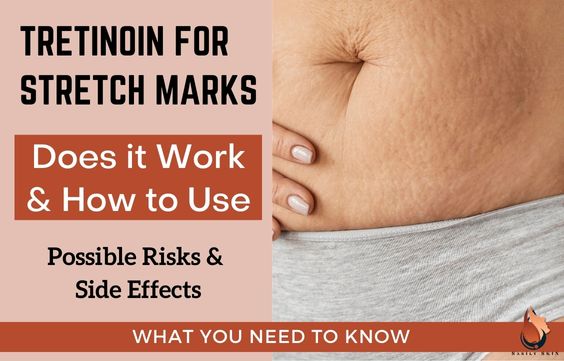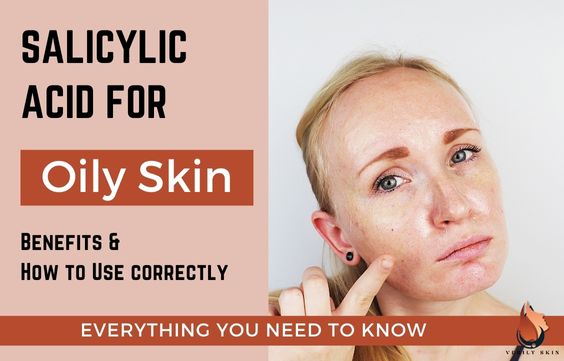Tretinoin for Hyperpigmentation: How To Use & Is it Good

Most commonly, tretinoin is used to treat acne, fine lines, and wrinkles on the skin. However, it can also be used to treat hyperpigmentation.
But tretinoin is much stronger than other types of similar remedies so you need to be careful when you use it. That’s why I am going to guide you on how it works and how to use it correctly and safely.
How Does Tretinoin Treat Hyperpigmentation
Tretinoin is a topical retinoid that increases the rate at which the skin produces new skin cells and replaces the old ones.
It is much more potent that the regular retinol and retinoids that we can buy over the counter at most skincare outlets.
Some experts think that tretinoin might decrease the amount of melanin in your skin, but it does not do this by directly affecting the production of the pigment. Instead, one research indicates that tretinoin causes dispersion of the melanin granules in the skin, which helps reduce hyperpigmentation in treated areas.
A common question we get is whether tretinoin is good for hyperpigmentation. The answer to that is yes, but there are better treatments for hyperpigmentation out there. If you have mild or small areas of hyperpigmentation, then tretinoin is a good enough option.
However, if your hyperpigmentation is severe or covers a large surface area of your skin, you should talk to your doctor about better alternatives like hydroquinone or a combination treatment.
Related Articles –
How to use Tretinoin For Under Eye Dark Circles & Wrinkles
Tretinoin for Oily Skin – How to Use, Benefits & Risks
Video: Showing Retin-A Effect on HYPERPIGMENTATION
How to Use Tretinoin for Hyperpigmentation
Tretinoin needs to be prescribed by a dermatologist who will direct you on how to use it based on the condition of your skin.
Remember that tretinoin is not a bleaching agent so it may not be the best option for severe hyperpigmentation. However, if you have melasma, age spots, or small, mild patches of hyperpigmentation, tretinoin could be beneficial.
Here are a few tips on how to use it:
- Start with a low concentration. The therapy will take some time for your skin to become used to it, and some negative side effects are possible. Start with the lowest effective tretinoin concentration you can get (often 0.01%) to minimize this and ease your skin into the therapy.
- Use it sparingly at first. This indicates that you should begin by using tretinoin two to three times a week. By employing this method, you may apply products in between and give your skin time to adjust without irritating it.
- Little is often enough! You don’t need to cover your skin with a lot of the product. Keep in mind that tretinoin is more potent and is absorbed deeper into the skin.
- Gradually increase how often you apply it. As your skin becomes used to the treatment, you can gradually increase the frequency of application. You will eventually be able to apply it daily.
- Be consistent. However, you can change up your routine if needed. You can progressively increase the concentration you’re using if your skin doesn’t improve and there are no negative side effects. Unless your skin adjusts sufficiently, you might need to change how frequently you apply the new concentration of tretinoin.
- Keep an eye out for negative effects on your skin. You should discontinue the therapy and seek medical assistance if it begins to look red, or overly dry, or if it begins to crack and peel.
- Using tretinoin during the day is not advised, particularly if you are going out. Your skin becomes thinner and more vulnerable to sun damage after using tretinoin. Keep your skin hydrated and sun-protected instead.
- Apply tretinoin at night. Apply your tretinoin after cleansing and before moisturizing, then allow your skin to relax while you sleep.
- Always use SPF, even though you are not applying tretinoin during the day. This will keep your skin protected.
- Be careful not to use tretinoin too soon if you have undergone skin treatments like micro-needling. Click here to read more about Tretinoin After Microneedling – When & How to Use
- If topical tretinoin does not help your hyperpigmentation, seek further medical help. Your dermatologist may need to assess what is causing your hyperpigmentation and you may need to consider a different treatment (for example, hydroquinone).
Related Articles –
5 Best Oils to Use with Tretinoin & How to Use Correctly
How to Moisturize When Using Tretinoin – What to Do & Use
Side Effects Of Using Tretinoin For Hyperpigmentation
When used properly, tretinoin treatment for hyperpigmentation can be advantageous.
Nonetheless, there is still a chance for side effects, which might include:
- Itching or burning
- Redness or peeling
- Uncommon dryness
- The area feels warm and tender to touch
If these symptoms worsen or continue, discontinue using tretinoin and obtain medical assistance.
Frequently Asked Questions (FAQs)
How long does tretinoin take to fade hyperpigmentation?
Since tretinoin is not a bleaching agent, it will take weeks to months to fade hyperpigmentation.
However, this will depend on the cause of your hyperpigmentation, how severe your hyperpigmentation is, the concentration of tretinoin you are using and how often you are using it, and your skin’s reaction to the treatment.
Related Articles – Tretinoin for Dark Underarms: How to Use Safely & Benefits
Can you use tretinoin and hydroquinone for hyperpigmentation?
You can use tretinoin and hydroquinone together for hyperpigmentation, but this need to be done with the guidance of a dermatologist or skincare professional.
Retinoids enhance the penetration of hydroquinone into the skin so using the two together usually works well if done correctly.
Related Article – Tretinoin for Stretch Marks: Does it Really Work & Risks
Can tretinoin cause hyperpigmentation?
There is some debate about tretinoin causing hyperpigmentation in people with darker skin tones, but one study published in the New England Journal Of Medicine discovered that it lightens the skin in all skin tones when used correctly instead.
However, if side effects occur or if you use tretinoin in a concentration and frequency that is too much for your skin you can cause your skin to become injured and damaged. This can result in scarring and hyperpigmentation.
Sources
Tretinoin: Uses, Interactions, Mechanism of Action | DrugBank Online
Skin Lightening with Tretinoin (Retin-A): The Facts | Apostrophe
Tretinoin: Uses, Benefits, Results | Ro
Skincare Science: Update on Topical Retinoids | Aesthetic Surgery Journal | Oxford Academic






